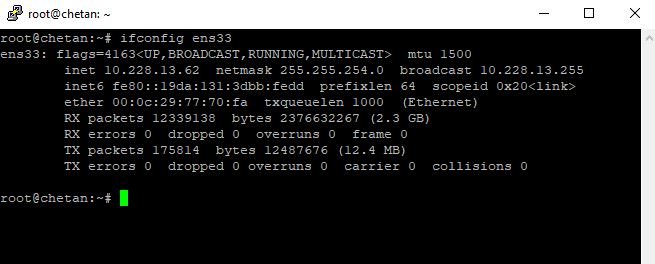The ifconfig (interface configuration) command is a powerful utility in Linux used for managing and displaying network interface settings.
While it has been largely replaced by the ip command in newer Linux distributions, ifconfig remains an essential tool for network administrators and users who need to configure network interfaces manually.
Syntax of ifconfig
ifconfig [interface] [options]
- interface: Specifies the network interface to configure.
- options: Includes commands to enable, disable, modify, or inspect interface parameters.
If ifconfig is run without any arguments, it displays details of the active network interfaces on the system.
Practical Examples of ifconfig
Below are some common use cases of the ifconfig command:
- Display Active Network Interfaces
- Show All Network Interfaces (Including Inactive Ones)
- View Details of a Specific Network Interface
- Enable a Network Interface
- Disable a Network Interface
- Assign an IP Address to an Interface
- Assign an IP Address with a Subnet Mask
- Assign an IP Address Using CIDR Notation
- Restart a Network Interface
- Change the MAC Address of an Interface
- Set the MTU (Maximum Transmission Unit) Value
- Enable Promiscuous Mode
- Disable Promiscuous Mode
- Create an Alias Interface
- Remove an Alias Interface
1. Display Active Network Interfaces
To see all currently active network interfaces and their details:
ifconfigThis command outputs information such as IP addresses, MAC addresses, and interface statistics.

2. Show All Network Interfaces (Including Inactive Ones)
To list both active and inactive network interfaces:
ifconfig -aThis is useful for troubleshooting inactive or down interfaces.
3. View Details of a Specific Network Interface
To check the configuration of a particular interface, such as ens33:
ifconfig ens33This displays specific details like assigned IP addresses and network statistics.

4. Enable a Network Interface
To bring a network interface online:
ifconfig ens33 upThis is useful if the interface is down or disabled.
5. Disable a Network Interface
To deactivate a network interface:
ifconfig ens33 downThis will disconnect the interface from the network until re-enabled.
6. Assign an IP Address to an Interface
To manually set an IP address for an interface:
ifconfig ens33 192.168.1.110This is useful for static IP configurations.
7. Assign an IP Address with a Subnet Mask
To set an IP address along with a subnet mask:
ifconfig ens33 192.168.1.100 netmask 255.255.255.0This command ensures that the device operates within the specified subnet.
8. Assign an IP Address Using CIDR Notation
ifconfig ens33 192.168.1.100/24CIDR notation simplifies network configuration by specifying the subnet mask in a compact form.
9. Restart a Network Interface
To restart a network interface, bringing it down and back up:
ifconfig ens33 down && ifconfig ens33 upThis is a common troubleshooting step when experiencing connectivity issues.
10. Change the MAC Address of an Interface
To modify the MAC address of an interface temporarily:
ifconfig ens33 hw ether 00:11:22:33:44:55This can be useful for privacy or bypassing MAC address filtering on networks.
11. Set the MTU (Maximum Transmission Unit) Value
To adjust the MTU size for an interface:
ifconfig ens33 mtu 1500This helps in optimizing network performance and troubleshooting fragmentation issues.
12. Enable Promiscuous Mode
To enable promiscuous mode, allowing the interface to capture all packets:
ifconfig ens33 promiscThis is used in network monitoring and packet capture tools like Wireshark.
13. Disable Promiscuous Mode
ifconfig ens33 -promiscTurning off promiscuous mode ensures that the interface only processes packets intended for it.
14. Create an Alias Interface
To create an alias (ens33:1) with a new IP address:
ifconfig ens33:1 192.168.1.101/24Network aliasing allows multiple IP addresses on a single physical interface.
15. Remove an Alias Interface
To delete an alias interface:
ifconfig ens33:1 downRemoving an alias can be necessary when decommissioning a temporary network configuration.
Conclusion
Although ifconfig is no longer the default tool for managing network interfaces in modern Linux distributions, it remains a valuable utility for users managing older systems or requiring simple interface configurations. Understanding and using ifconfig effectively can help in network troubleshooting, configuration, and security assessments.
For more advanced networking features, consider using the ip command, which offers greater functionality and flexibility.



